Specifications
- Lens: Carl Zeiss Jena Biometar 2.8 / 80mm “Zebra”
- Camera Serial Number: 129 765
- Lens Serial Number: 9 334 119
- Viewfinder: Waste level with standard focussing lens
Shutter Speeds
B, 1s, 1/2s, 1/4s, 1/8s, 1/15s, 1/30s, 1/60s, 1/125s, 1/250s, 1/500s, 1/1000s
Aperture Values
f/2.8, 4, 5.6, 8, 11, 16, 22
The Pentacon Six TL: My Latest (and Final!) Camera Addition
When the package arrived from Germany, I felt a rush of excitement that brought back memories of unboxing my first-ever camera decades ago. Unlike my first box in 1966, which contained a Kodak Instamatic 50, this time it held the Pentacon Six TL—a camera I had been eyeing for a long time but only recently decided to acquire.
Carefully unwrapping the layers of protective packaging, I was struck by the heft and presence of the camera. The serial number, 129765, seemed to whisper stories of precision and craftsmanship, indicating its manufacture in 1979. Adding to the charm was the seller—a photo shop in Leipzig—making me wonder if the camera had never left the former East Germany until now.
The attached Zeiss Jena Biometar 1:2.8 80mm lens (serial number 9334119) glistened, its pristine glass hinting at the photographic possibilities ahead. This “Zebra” version is significant not only for its iconic striped design but also for its historical and technical lineage. The serial number indicates it belonged to the last optical calculation made on October 31, 1979, adding a layer of intrigue and nostalgia. Finally, the original leather case, in mint condition, with its unmistakable vintage aroma and careful stitching, completed this perfect package. The entire experience felt like a journey back in time.
The Charm of the Pentacon Six TL
The Pentacon Six TL is no ordinary camera. Produced in East Germany by VEB Pentacon from 1966 through the early 1990s, it embodies the design ethos of a bygone era. This medium format SLR feels substantial, with a metal body that radiates durability and elegance. Its modular design includes interchangeable viewfinders, and my version came with the waist-level finder—a feature that immediately transported me back to the days of peering down into my father’s old Zeiss Ikon camera with it’s add on viewfinder as a child and later on in my highschool where we had a Hasselblad.
There’s something profoundly intimate about composing a shot this way. It forces you to slow down, carefully frame your subject, and immerse yourself fully in the process. This nostalgia, combined with the practical benefits of waist-level shooting—such as capturing low-angle shots effortlessly or engaging subjects without intimidating them—makes it an essential and deeply satisfying aspect of using this camera.
The camera’s standout feature is its Zeiss Jena Biometar lens. Known for its sharpness, beautiful bokeh, and Zeiss’ unparalleled optical quality, this lens has long been a cornerstone in medium format photography. Paired with the Pentacon Six TL’s ability to shoot 6x6 square negatives, the potential for stunning compositions is immense.
Why the Pentacon Six TL?
I’ll admit, I’ve been deliberate about curating my collection of cameras. No, I don’t have Gear Acquisition Syndrome. Every camera I own serves a purpose, either as a functional tool for creative exploration or as a piece of history to admire. For instance, my Zeiss Ikon Ikonta 521/2 is my go-to for timeless black-and-white landscapes, while the Holga 120 GCFN adds an element of unpredictability and creative imperfection. Each piece in my collection contributes uniquely, balancing utility with nostalgia.
The Pentacon Six TL fits perfectly into my collection for several reasons:
- Medium Format: My photography journey has recently revolved around slowing down and appreciating the art of analog. The larger negatives offered by medium format cameras like this one provide stunning detail and tonality.
- Zeiss Legacy: With its Carl Zeiss Jena lens, this camera connects me to the rich legacy of Zeiss optics. As a longtime admirer of Zeiss craftsmanship (my Zeiss Ikon Ikonta 521/2 being a testament), owning a Zeiss-equipped medium format SLR felt like a natural progression.
- Iconic Design: The Pentacon Six TL commands respect. Its rugged, all-metal construction stands in stark contrast to the plastic-dominated world of modern photography gear. This is a machine built for the ages, with no unnecessary frills.
- The Final Piece: This camera is my last planned acquisition. It completes my collection and represents the culmination of my photographic journey—a journey that celebrates craftsmanship, history, and the joy of analog photography.
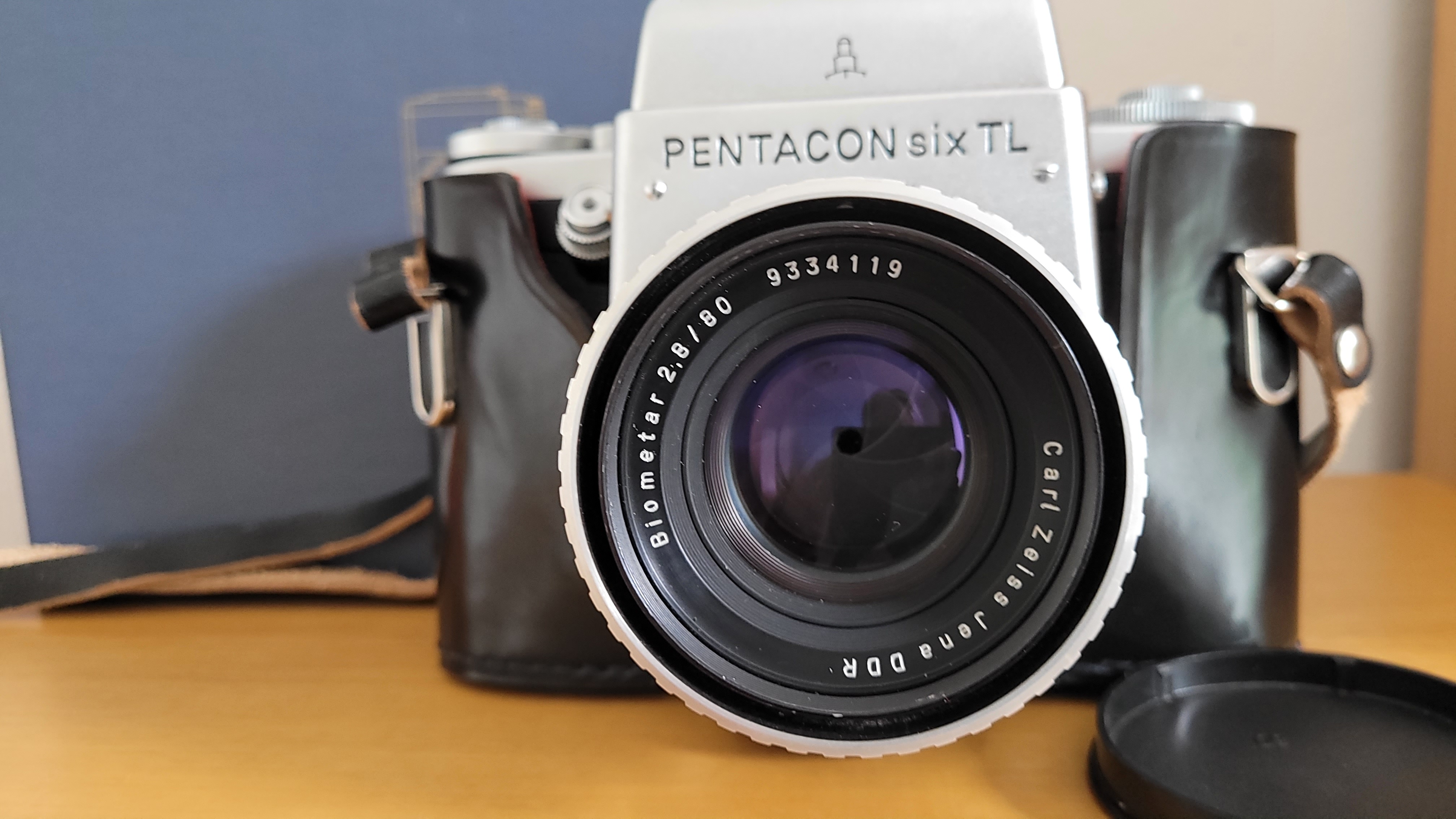
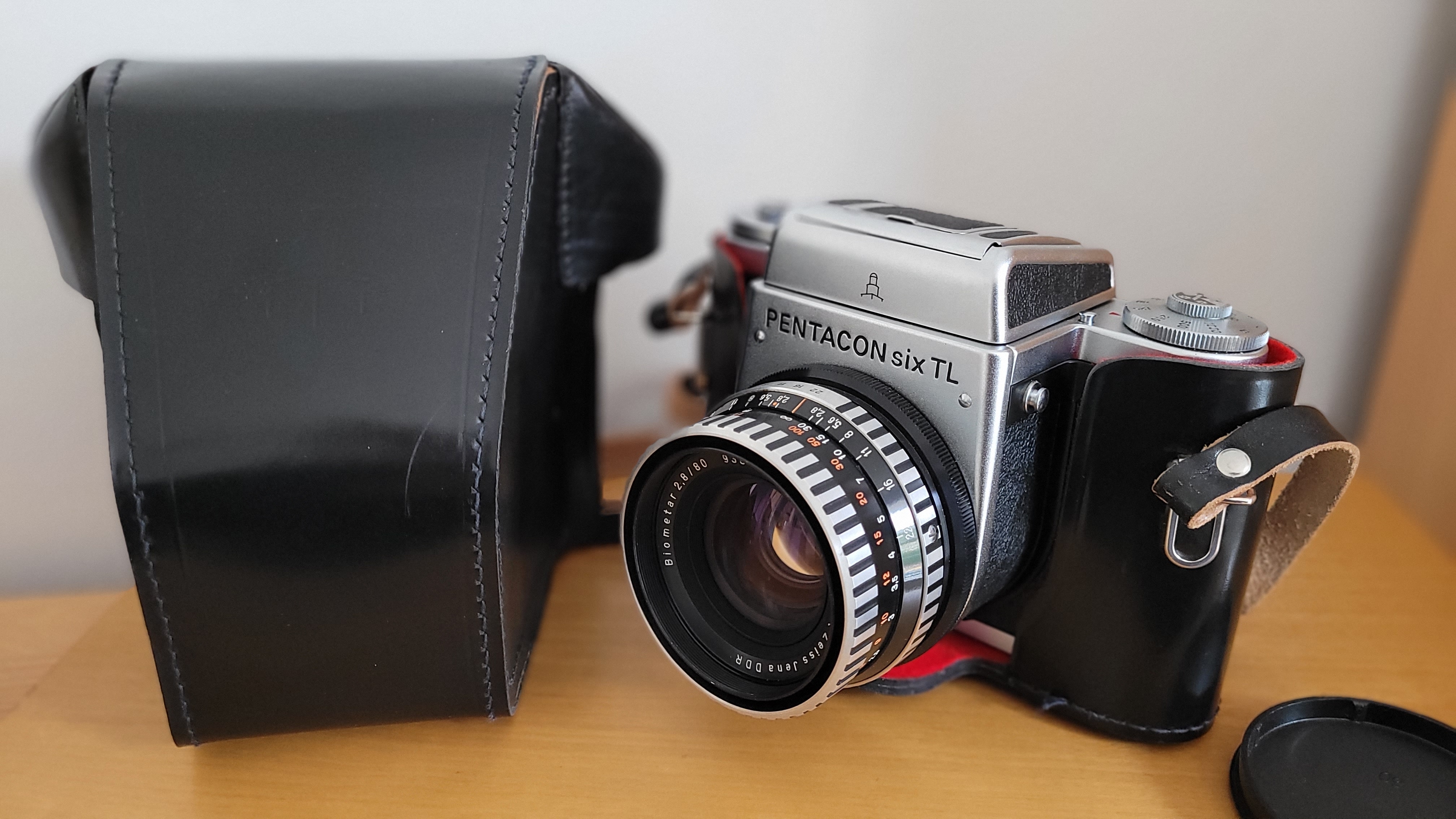
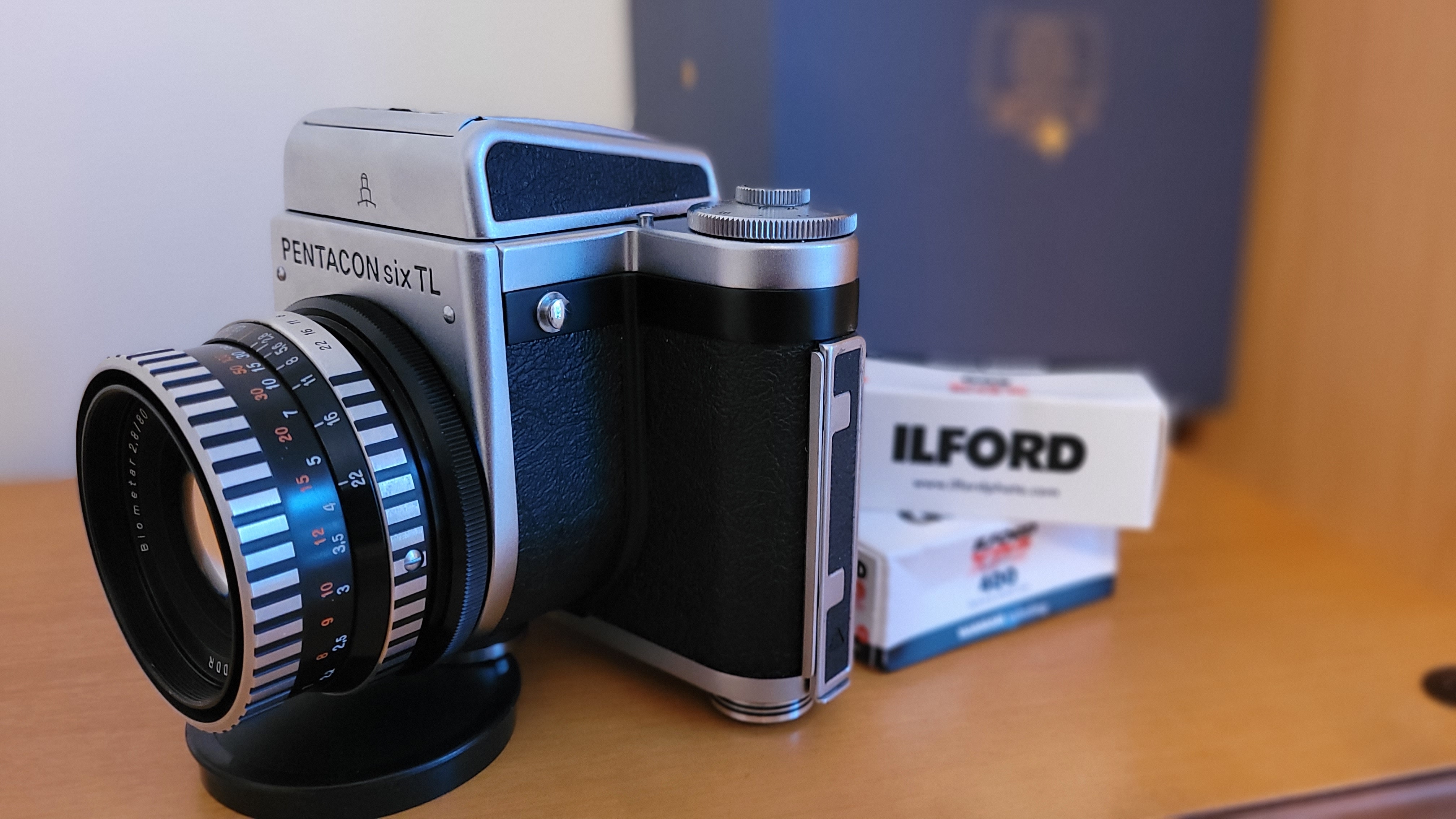
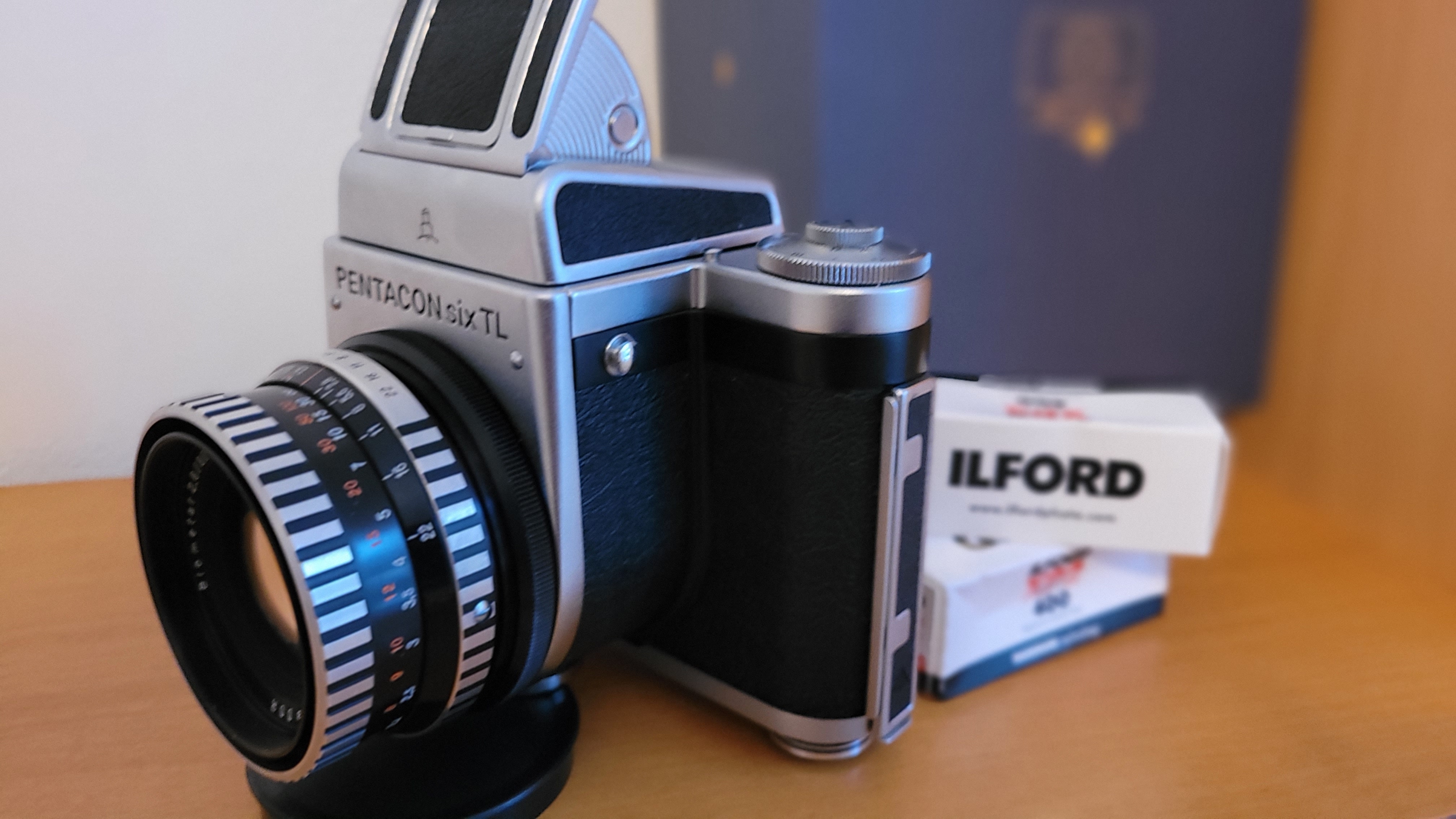
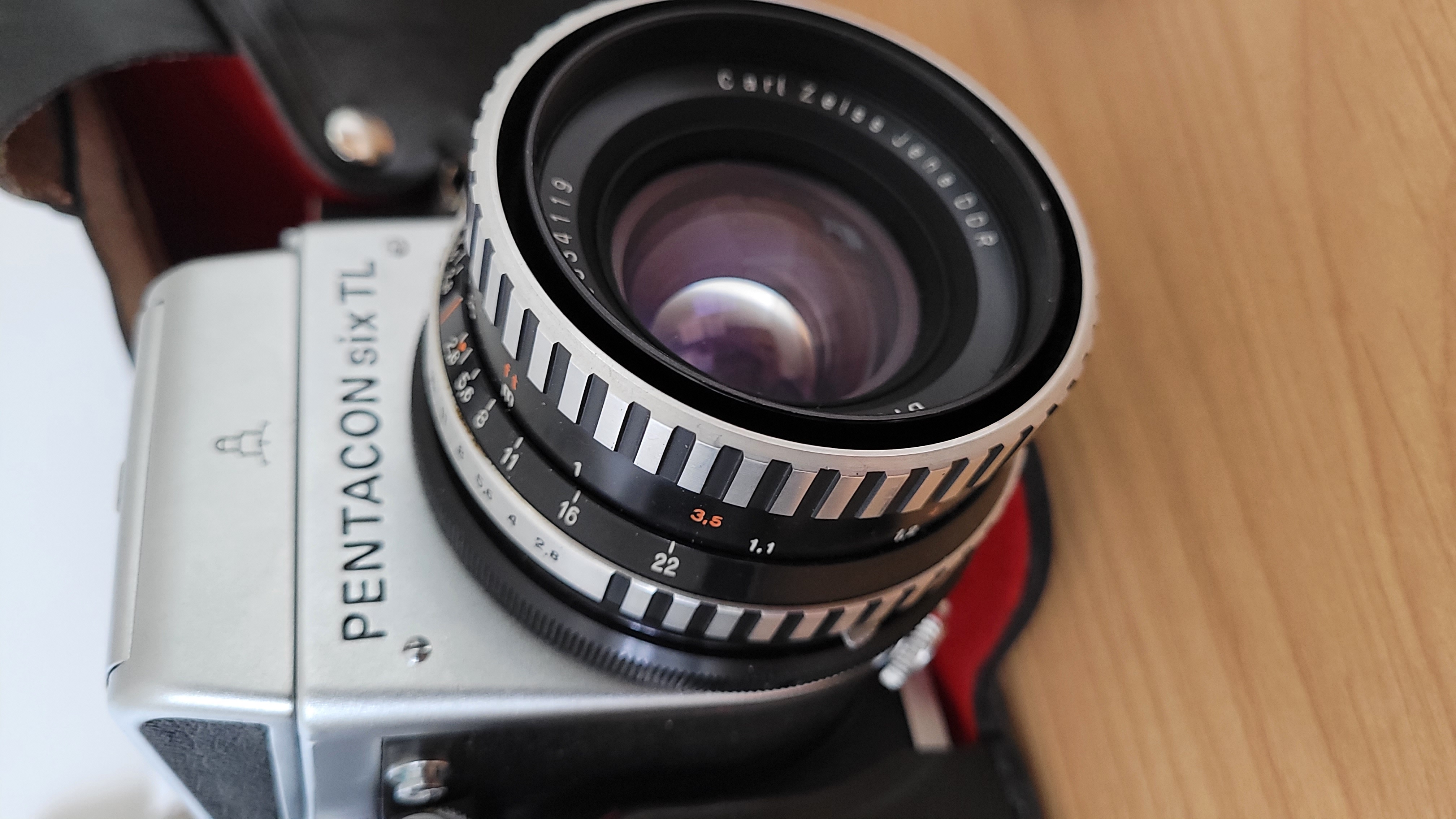
A Glimpse Into Its History
The Pentacon Six TL was born from a lineage of German Democratic Republic (GDR) cameras, succeeding the Praktisix and continuing its mission of making medium format photography accessible to professionals and enthusiasts alike. Despite its reputation for occasional mechanical quirks—such as potential frame spacing issues or the need for careful winding to avoid overlaps—the Pentacon Six TL earned a loyal following thanks to its robust build and exceptional lens lineup.
There are very different opinions on the internet about the quality of the Pentacon six and its accessories. The problem seems to be that you buy a medium format camera like the Six or the Kiev 60 for relatively little money and then you are disappointed that you cannot achieve the comfort of a modern professional medium format camera (which costs several thousand euros for a reason). In general, the Pentacon six cameras are of good quality.
This camera also has historical significance as a product of East Germany during the Cold War, showcasing the technological achievements of the time despite geopolitical challenges. Owning one feels like holding a piece of history in my hands.
If you want to know more about VEB Pentacon history, this one is a brilliant overview (in German, but youtube can add CC in different languages)
It is interesting and probably only known to a few that a Pentacon Six TL accompanied cosmonaut Sigmund Jähn into space in August 1978. During the 7-day trip, Jähn used a total of “an incredible” 14!! films.
The Pentacon Six TL in 1979: A Luxury of Its Time
Speaking of history, the Pentacon Six TL, was not just a tool for photography—it was a significant investment. Its pricing in 1979 varied widely depending on the country, reflecting the economic disparities and purchasing power of the time. Let’s take a closer look at what owning this iconic camera meant in different regions:
Poland In Poland, the Pentacon Six TL was an unattainable luxury for many. Priced at 6,190 USD, adjusted to local currency, this was almost five times the average annual salary of 1,238 USD. Such a price tag placed the camera squarely in the domain of professionals or affluent enthusiasts. For context, a typical worker in Poland would have had to save diligently for several years, and even then, acquiring the camera would have been a major financial commitment.
Germany (West Germany) In West Germany, the Pentacon Six TL was more accessible but still expensive. Priced at 3,400 Deutsche Marks (DM), this translates to approximately 4,000 USD in today’s money. This price reflected the camera’s high quality and appeal to serious photographers. For a West German with an average income, buying a Pentacon Six TL required significant savings but was not entirely out of reach.
German Democratic Republic (GDR) The situation was very different in East Germany, where the Pentacon Six TL was produced. In the GDR, the camera was priced at 1,000 Marks, with an additional 500 Marks for the TTL viewfinder. However, these figures are misleading without understanding the context. East German currency, the Mark der DDR (M), could not be freely converted into Western currencies. Despite the relatively lower price tag, the average citizen would still struggle to afford the camera due to lower wages and limited availability. In many cases, access to such equipment required connections or placement on a waiting list.
Owning a Pentacon Six TL in 1979 was more than owning a camera; it was a statement. Whether a professional photographer in West Germany, an affluent enthusiast in Poland, or a fortunate East German with access to scarce goods, the Pentacon Six TL represented a blend of prestige, ambition, and passion for photography.
What’s Next?
I plan to load my first roll of film into the Pentacon Six TL this weekend. My initial test will likely involve some Ilford XP2 Super 400, to get familiar with the camera and see how the Biometar performs. As always, I’ll document the process, from setting up the camera to developing the film, and I can’t wait to share the results.
Adding this iconic medium format camera to my collection feels like the perfect conclusion to my gear journey. It’s a reminder of why I returned to analog photography—to slow down, appreciate the craft, and connect with the history and artistry of film. The Pentacon Six TL isn’t just another camera; it’s a celebration of everything I love about this timeless medium.
First Test Roll results
Film: Ilford XP2 Super 400 Appeture: f/8 Shutter: 1/250s Handheld
While far from perfect it documented the the camera is in good shape. The Biometar lens is stunning. I made a bunch of mistakes on focussing.






Other article to learn from
Camera review: The Pentacon Six TL and the Curate’s Egg
Camera review: Fixing a bad rep… It’s time for the Pentacon Six to shine
Camera review: The Pentacon Six TL, a (hopefully) comprehensive guide to a legend
Thanks for reading!
If you find value in my content, consider supporting me with a virtual coffee ☕️ or a beer 🍺.
Your contributions help keep this blog thriving.
© 2024 Henry
